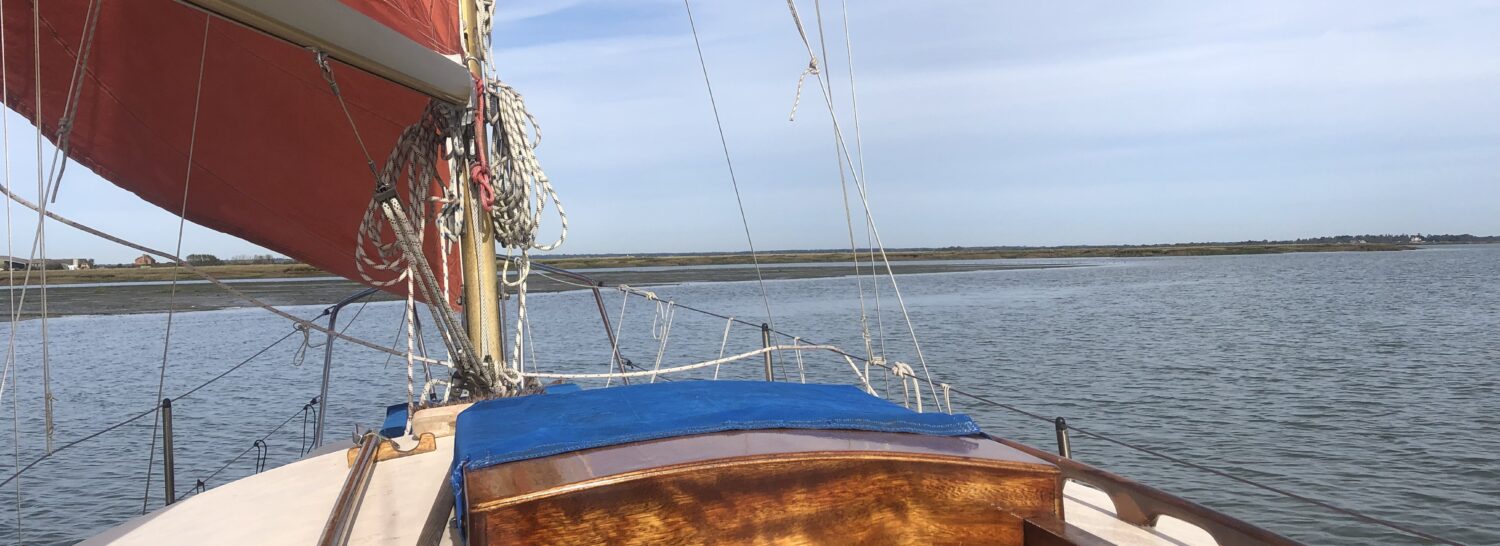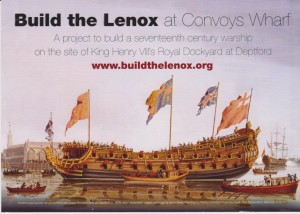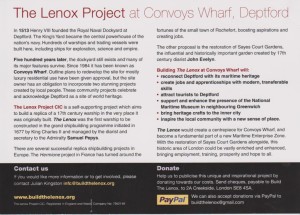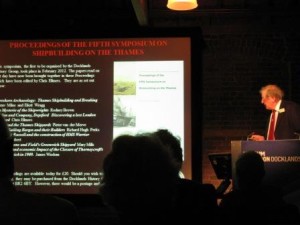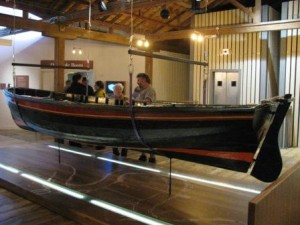Two things came up together this year, however one, the symposium, was booked months ago so that was that really. The other was the AGM of the Society for Sailing Barge Research (SSBR) which was being held in Gravesend on Saturday…
I went alone to the last event two years ago. My good mate had booked but had fallen ill … spending the day under the sheets! Yesterday we travelled up together (on a date!). She thoroughly enjoyed the event for it covered much social history as well as yards, the men and some ships. It was a good day…
There were papers on:
1. John Dudman and the Grove Street Dockyard, Deptford. It was based immediately upstream of the old naval yard currently ‘buried’ under Convoys Wharf and subject to a planning application for des-res flats etc.
This was facinating stuff by a man, Chris Elmers, who has been heavily involved with the river and its history for many years becoming a key element of the Museum of Docklands…
2. Royal Shipbuilding on the Thames 1509-47 by Dr. Ian Friel. This was one of the drier ones but fascinating all the same: it covered the period immediately prior to the establishment of proper naval shipyards or dockyards as they were to become known as … a word not in general use until the late 17th century…
3. Charles II and Shipbuilding at Deptford. This is the yard sitting beneath the ‘Convoys’ wharf site a little upstream of Deptford Creek.
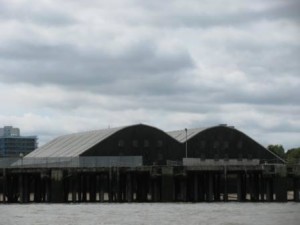
Old dockyard buildings on the Convoys wharf site – grade 2 listed. Note similarity to those at Chatham.
The Talk covered a little about the yard and how it was laid out then moved onto an amazing project that has been quietly getting underway, but still very much in the gestation stage. The plan is to get the developer involved in the project to connect the community with its old yard and waterfront. Deptford has suffered from being the close neighbour of Greenwich, yet it is itself a place of great historic importance too and much overlooked. It suffers from the ‘inner city’ problem too. A french project in a similar type of place has transformed the town, bringing in investment and tourists.
So, the plan is to build a replica of the first ship constructed in the Stuart building programme iniated in 1677 by Charles II. This was HMS Lenox – see below…
The two sides to an information card…
Preliminary discussions with the Maritime & Coastguard Agency (MCA) have been fruitful. Interesting!
4. There then followed a paper by Professor Andrew Lambert on the fascination of Turner with the sea and what he was actually depicting during the troublesome Napoleonic period. Apparently, the canny artist’s pictures were essentially aimed at boosting Britain and pasting France!
Some of Turner’s output were Medway and Thames paintings – of waters he knew well. The famous Temeraire and tug picture was explained in that it was the tug, a steam driven vessel, which was the key feature, not the rotting old ship. It displayed British technology on a river producing the new generation of warships… Art eh! Wonderful!
5. This was followed by a fascinating insight by three Parsee Indians (high birth) from families who ran yards in Bombay. These were Jehangeer Nowrogee, Hirjebhoy Merwanjee and Ardaseer Cursetjee. The three gentlemen spent a couple of years studying aspects of naval architecture, shipbuilding and methods. This knowledge was taken back to the yards in the then East India ‘run’ India.
Indian yards built many ships of the line, one of which the Trincomalee is still afloat and rigged up in Hartlepool Docks Museum.
Loved this – brilliant.
6. Des Pawson, a man known of by many east coasters and those beyond for his knowledge and books on knots and rope work, then talked about the London men and women who made the tools needed by sailmakers…
It was stated that Des was a sail maker by the announcer, but this was news to me. The need le manufacturing trade was driven from Londo and went to Bromwich in the midlands in the 14th C. However, it appears that some London makers survived: it was largely a cottage industry. ‘London’ needles were highly regarded!
Enjoyable.
The Docklands History Group leader summing up at the end…
7. A paper by Stuart Rankin & Dr. Roger Bowen, on the King & Queen Foundry near where the Surrey Canal entrance sits today followed. This firm amongst other things experimented with superheated steam in the 1830s – revolutionary stuff. Their forgings were essential in the growth of steam engines, rods and shafts being their speciality. Forged links became important in railway bridge building too … the paper was delivered by a secondary, who’d worked on it because the originator was ill… It lacked some essential excitement, but was educational.
8. Now this next one was a gem. A doctor (GP) came across a 50 page manuscript owned by a friend. It was written by the friend’s grandfather who had been a Cubitt Town shipbuilder. This was Dudgeons, a prolific shipbuilder virtually second only to Thames Iron Works by Bow Creek for a number of years.
The company built the first twin engined twin screw steam ships – these were fast and manoeuvrable vessels. Many went across to the Confederate States during their conflict (which still seems to be going on…) with the Northern States… The firm also built a ship with water jet propulsion – it worked, but didn’t catch on. Now of course for small shallow draft specialist craft it is almost standard.
9. There was a last paper on the steam coaster Robin… That is the ship which had a pipe load of dosh from Crossrail and the National LF to be dressed up and stuck up on a lighter. As far as I am concerned she is nothing more than a ‘gimmick’ however … the trustees are in need of funds to finish the job to be able to attract visitors … now here lies the problem.
I read’Cutty Sark’ … it will not be a ship.
I remember a barge, the little Seagull II stuck up on a plynth above the Thames until an enlightened man came along and had her taken to Gillingham … she could well be sailing again this year … is there a lesson here?
A Thames skiff – working boat, restored and exhibited outside the lecture theatre…
We had a great day…
